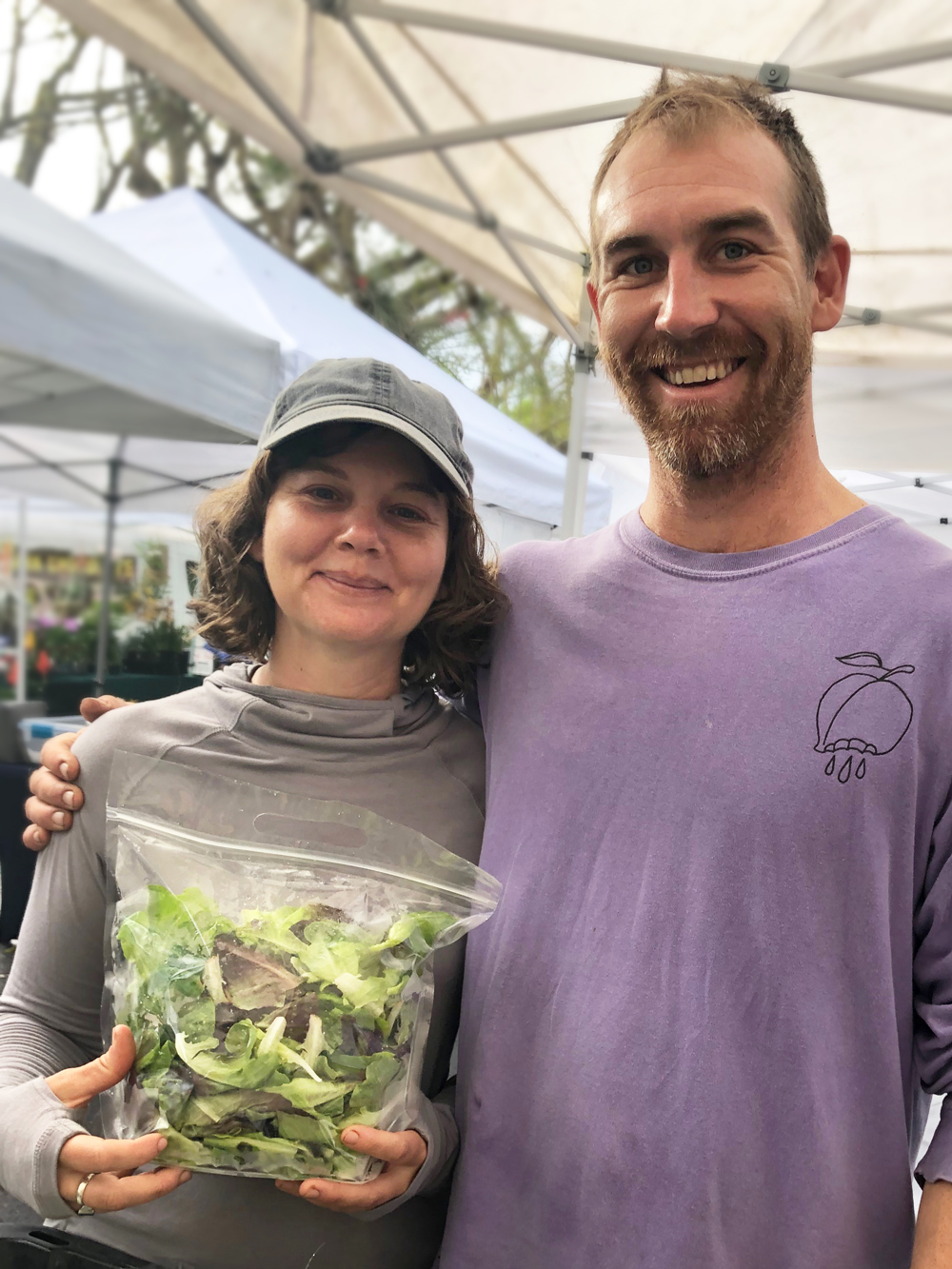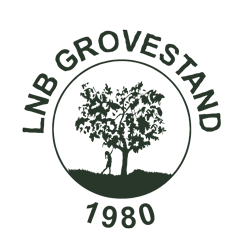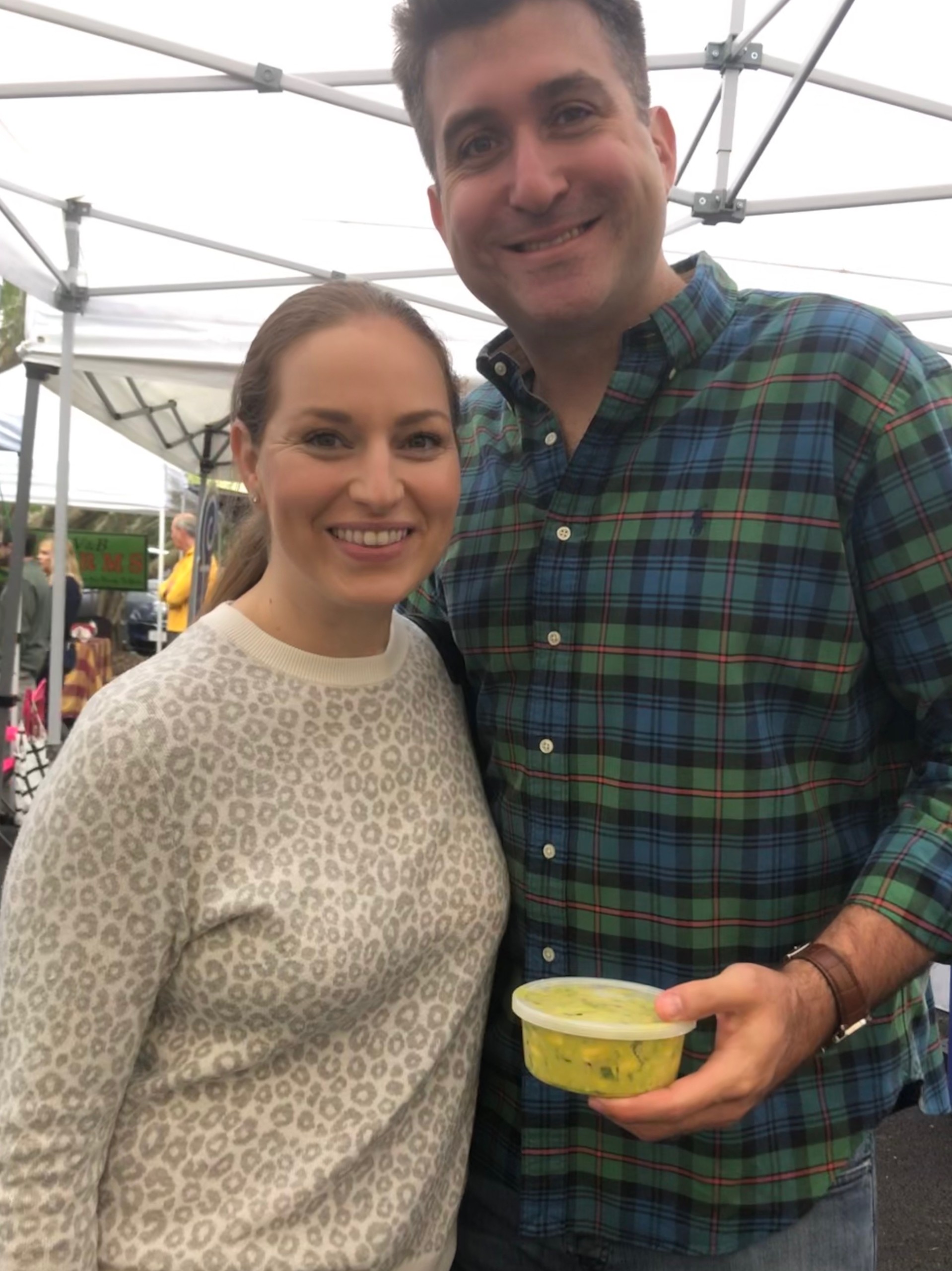
Tiffany
Name:
Tiffany
In what part of town do you live?
Biscayne Park
How long have you lived in the area?
In Biscayne park for a year, before that I lived in Buena Vista for six years. I’m originally from Miami Beach. I grew up on one of the Venetian Islands and then, as a tween, I moved to Pinecrest.
Would you tell us a little bit about yourself?
Farming is my second career. I went to UF for photography and then moved to Germany and lived there for 10 years. I worked for a contemporary art gallery. And then, I moved back to Miami because my father was ill. I was supposed to be here for just the winter, and that was eight years ago. Miami got me.
Would you share about the farming part of your life?
When I first moved back to Miami, I was waiting tables and was interested in agriculture. I drove around the country for a year, volunteering on farms, and figuring out whether it was something I wanted to take more seriously than a hobby. When I got back to Miami, I was very inspired by the tropical fruits that were dangling in everyone’s yards. When I met Muriel, my business partner, I wanted to start an edible plant nursery and she already had a small organic farm. We merged and diversified. We’ve had a lot of different iterations of the business over the six years that we’ve been together. Currently we have a 15,000 square foot lot in Allapatta where we have an edible plant nursery and a little urban farm.
What got you interested in agriculture?
When I lived in Germany, I was really interested in macrobiotic eating. Germany is a little behind in a few things. So, I got super into cooking for myself and I made everything from scratch, like my own tempeh and my own seitan. I got really into it. That led me to think, ‘where is all this food coming from? Does it matter who produced it and how it was produced?’ I’m a bit of a reader, so I started reading food ethics books, like Michael Pollan and Dan Barber. And then started gardening and it sucked me in.
What do you enjoy most about it?
I’m always learning new things. Sometimes, that’s a pain in the butt, but it’s always inspiring. For example, last year we had an outbreak of this pest, in our nursery, called a fungus gnat. I had to learn all about fungus gnats and their life cycle. I had to even learn about a new organic pesticide I had never heard of before and how to apply it and how to break their life cycle. At the same time, I was losing plants and it caused some stress. I’m always amazed at how much I don’t know. Chris and I are both so passionate about farming and the small tools movement, like open source tractors. Even when we come home from a full day of farming, we can’t wait to share with each other what we learned from a farming podcast, or about a small tool, or some new crop. It’s really fun.
What is the small tool movement?
That’s Chris’s department. It’s a really interesting movement that’s happening within the one to two-acre farming world where the participants have said this doesn’t have to be really inefficient. We can band together and make these tools and share resources and make it so that smaller scale farms can still have a quality of life and generate profit.
What are the farming podcasts you both listen to?
Farmer to Farmer and Thriving Farmer
What’s five years down the road?
In five years, I’d love to be growing more food for people. Miami has nowhere near enough regenerative farming practices making fresh food for people. There’s such a need in the community and I really want to fill it.
How is your first career in photography and working at a gallery in Germany helping your second career? And now we understand why your Instagram pictures are so great!
It’s funny, Muriel and I take turns doing the Instagram and people say that it’s hard to tell who’s posting. That’s something I’m proud of. It means that were good at expressing a shared vision. I’m definitely still using a lot I learned at school. I designed our website, so there’s a little bit of graphic design. And when I managed the contemporary art gallery in Berlin, I was running someone else’s small business. So, I took all that I learned from that experience and am now using that to run my small business.
Would you tell us a little bit about the farmer’s market that you go to?
We go to the Legion Park farmer’s market. It’s on Biscayne Boulevard and 66th street in the Upper East Side part of Miami, which is a historic art deco area that’s experiencing a bit of a boom. We’ve been going there since the very beginning, about seven years. We really love it because we live in that community too. We have customers that have been with us this whole time and we’re feeding our friends and our neighbors and everyone’s really supportive. The market is run by Urban Oasis project and they work hard to support the vendors and to make sure that the market is popular. It’s in a beautiful park, it has free yoga. They do special events where they invite musicians to play. Urban Oasis project are very supportive and they’re really responsible resellers of produce. They only buy local produce and they try to support all the small farms. Even when we’re not going to the market because we don’t have enough produce to make it worth it, we still sell stuff through Urban Oasis.
What did you enjoy while you were visiting us at the Pinecrest Market?
I wish I went to your market more, but it’s so far away. I had your guacamole, we took it on our canoe trip. That was really delicious. I’ve had the rainbow smoothie and that’s also really cool. I’m very impressed by the way that you guys found this creative way to use all of your local ingredients and add value in the form of a smoothie. There’s a lot of passive education in selling some of our produce and it is nice to get someone used to the idea of eating jackfruit without having to say ‘it tastes like this’ and….’don’t be scared’. You’re getting past that first hurdle.
What restaurants are you all enjoying right now?
Mandolin is a great one. They opened a new ‘diner concept’ on Biscayne Boulevard in a historic hotel called Gregory’s. And it has a poolside bar, which is very fun to hang out at. We go to 27 Restaurant as often as we can. On the modest side, we eat at B and M a lot for lunch. It’s a tiny restaurant in the back of a convenience store in little Haiti. It’s really, really good. And – Dumpling King is great – it’s on 125 street in North Miami,
What is something that you’re cooking at home on a regular basis?
Chris has a tradition of something we call ‘hot salad.’ We take any of the hardier greens that we have, basically anything but lettuce, and chop it up and add it to a sofrito, an onion pepper base, and sauté and wilt it. We eat that almost every day. Also, there is a fish dealer up by our house called Blue Runner and Chris will stop there on the way home and get whatever’s fresh and we’ll grill it really simple.
What’s Miami’s best kept secret?
Virginia Key beach, for some reason there are never any humans there.
What’s a good rainy-day activity?
My favorite rainy-day activity is staying home and cleaning with the windows open. And, getting all cozy at home, but always with the windows open, because I like to listen.
What is a worthy splurge?
Dining out for sure. And good work boots. I’m a Blundstone woman. Once a year, I buy $200 boots and feel like that’s really worth it. Chris is a Redback man, which is the other option for people. Muriel and I are both solidly Blundstone.
What community groups are important to you that we should we know about?
Up here in our area, there’s this cool new house being turned into a community center. It’s called Finca Morada. They do a lot of cool community programming, like queer and trans friendly women’s circles. They do community work days once a month where volunteers help transform their half-acre into a permaculture food forest. I go to yoga there every Thursday, it’s a donation, sliding scale, yoga.
And, Buenezas, which means weeds is a very cool not for profit that functions out of Earth and Us. They received a Knight foundation grant to do a series of community workshops using and cooking with weeds.
And, everything that Urban Oasis project does is cool. They do a farmer dinner series throughout the season that highlights a different local farmer and they have a chef come and make dishes around that farmer’s specialties.
How can we learn more about your business?
Go to our website, LittleRiverCooperative.com or check us out on Instagram. The best thing to do is to just show up here when we’re open Mondays and Fridays from noon till five. 771 NW 24th St in Allapatta. Open the gate and even if you’re like ‘I don’t really need plants, but can I look around’, we would love to have you. This time of year is perfect to come visit because we have a big exhibition garden where we harvest for the market and for chefs. We end our season in May.
Is there a challenge that you would like to pose to the community?
I would like to challenge people, in a fun way, to really open up and be a little more exploratory about new foods. We happen to live in the tropics, which is very rare for this country and we can grow different stuff. I really love it when people push their food boundaries. And, if someone has a garden at home, don’t just grow beefsteak tomatoes and cilantro. Open yourself up to the possibilities of really unique stuff like weird tropical fruit or spices from other countries. And then, I would challenge people to waste less food. At the end of the season, turn your nasturtium plant into nasturtium vinegar.
What have I not asked you that’s important to you?
You haven’t asked anything about Sawyer, the farm dog. Sawyer is a really important part of our farming system. He’s a 20 pound wire-haired terrier and he works at French farms and Little River Co-op and is our employee of the year for being a really good guy. I often stay here by myself, and so I really like having a little security guard with me. And he’s a really friendly icebreaker for our customers and our younger visitors. He’s like a tour guide.
Last week Chris suggested one question for you – ‘Ask if she’s really sure that she doesn’t want to live in Homestead?’
I mean honestly, I go back and forth because Homestead is Miami’s agricultural district. It’s clearly where we should move if we want to feed more people. But I struggle with feeling like I’ll be fulfilled in non-farm ways there. I feel like I’ll lose connection with my friends and family that live here.
Related Posts
Leave a Reply Cancel reply
You must be logged in to post a comment.



